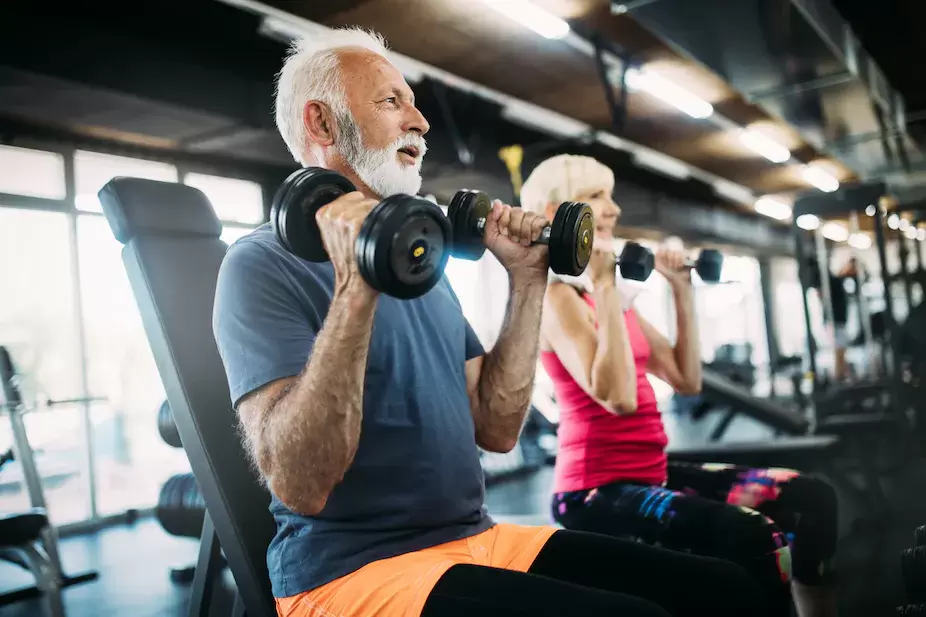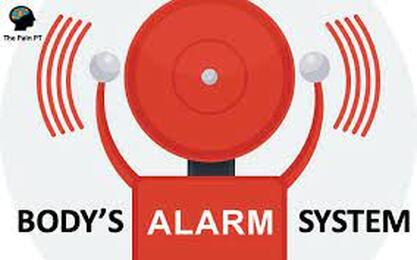|
With age comes more wisdom, knowledge and experience! But unfortunately, pain also increases with age. 1 in 5 (20%) people aged 65–74 reported having chronic pain, increasing to 22% of those aged 75–84 and 24% of those 85 and over. I truly believe knowledge is power and with changes in understanding around persistent pain let's have that understanding widespread. That is what the purpose of this blog is, to help the older and wiser population understand pain and how we can help. It's Like an Alarm on Your Car Persistent pain management has progressed immensely over the last 10-15 years. From a completely biomedical approach (I hurt because the body tissues are damaged) to a more contemporary model based on the most recent research that tells us that pain is a protection mechanism for the body to prevent injury or damage. In simple terms, pain is the alarm system of the body, it gives us a protective buffer and reminds us not to do too much too soon. It is a safeguard to keep our body and its tissues safe. It is a normal response to potential danger and is always 100% real! What do I mean? Ever reversed your car into a pole? Before you hit the pole, the car beeps at you and warns you of the danger behind you. Well, this is like pain. As you get closer to the pole the car beeps faster and faster and eventually if you ignore it, you hit the pole and injure the car (ouch). Once injured, the sensitivity of this alarm goes up, things that might not have hurt before, do and things that would only hurt a little, hurt a lot. This is for protection and to promote healing. Usually, as the body heals the sensitivity decreases and everything goes back to normal. Think of being sunburned and getting in a hot shower. That burns doesn't it? But once the body heals from sunburn that same shower doesn't hurt anymore. The overprotective Alarm Now you have a grip on why pain is needed. Let's dive into when it hangs around! This is caused by an over-sensitive pain system. What this means is that the pain system that had increased its sensitivity due to an injury has not returned to normal, even though normal healing has taken place, pain has continued. This is unhelpful and prevents recovery. Think of the beeping car. The car beeps faster and louder even though you aren't in danger of hitting the pole. Unfortunately, I can't answer why the pain system may stay in overprotective mode but there are some things I can tell you:
How does exercising turn the alarm down? We here at Optimum EP advocate strongly for exercise because we know the huge amount of benefit someone can see in all aspects of their health. And you guessed it, Exercise can be a helpful mechanism for perisitent pain also. This proces is called exercise hypoalgesia which simply means engaging in exercise can help alleviate or decrease painful symptoms. This happen several different ways including:
Now disclaimer incoming: Exercise may not completely alleviate pain, BUT it can significantly improve pain management, reduce the need for pain medications, and enhance overall well-being. Haven’t convinced you yet? Now if you are struggling with the idea of exercise for pain management let me indulge in a little advocating. Exercise is the most powerful intervention in which can simultaneously help management huge range of different chronic conditions and give you a enormous amount of benefit in one action. “If exercise was made into a pill, it would be the most prescribed pill in the world.” Read that one again. Exercise is so powerful in some cases research has shown it to out-perform medication. And guess what, it is all natural, anyone can do it and it is free. Now I am going to list 10 different ways exercise can help you aside from pain management:
Tips for starting! The key to successfully starting an exercise program with persistent pain is to:
The journey is unique for each person, so there's no need to rush. In fact, taking the time to build a solid foundation is often the path to long-term success. Seek the guidance of one of our Accredited Exercise Physiologist to tailor your exercise plan to your specific needs and limitations. Remember, the most important thing is to start, keep moving forward at your own pace, and celebrate the small victories along the way. Izaac Boylan Accredited Exercise Physiologist
0 Comments
Your comment will be posted after it is approved.
Leave a Reply. |
AuthorSLisa Parkinson Archives
July 2024
Categories
All
|






 RSS Feed
RSS Feed